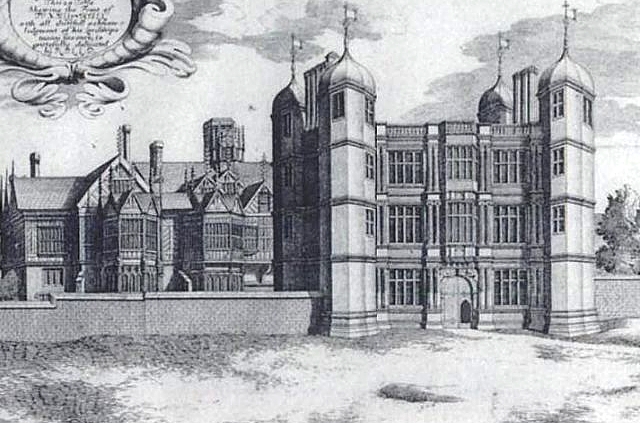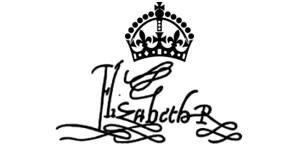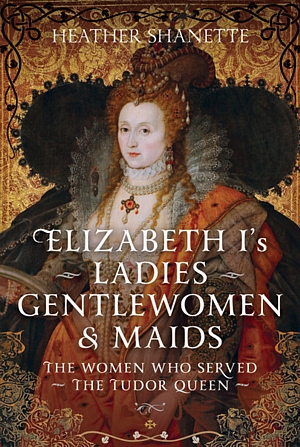Mary, Queen of Scots
Residences 1568-1587

Workington Hall
Workington Hall (Cumbria)
16 May 1568: Queen Mary spent her first night in England here. The manor is now a ruin.
Cockermouth Hall (Cumbria)
17 May 1568 : Queen Mary rested here on her way to Carlisle Castle. This was the last place she held court.

Carlsile Castle
Carlisle Castle (Cumbria)
May-July 1568 : Queen Mary's captivity began at this castle. She was lodged in the Warden's Tower for several months. The castle survives but the Warden's Tower was demolished in 1835.

Bolton Castle
Bolton Castle (Yorkshire)
July 1568 until February 1569 : In these early days of her captivity, Queen Mary still had considerable liberty and was allowed to hunt
and enjoy the surrounding countryside. On her way to Bolton Castle, Queen Mary stayed at Lowther Castle and Naworth Castle.

Tutbury Castle
Tutbury Castle (Staffordshire)
February 1569 until April 1569 : This was Queen Mary's most loathed residence and the place she considered her first real prison. The medieval
castle was damp, draughty, and for some years had fallen into decay. On her way to Tutbury Castle she stayed at Ripon and Pontefract Castle.

Wingfield Manor
Winfgield Manor (Derbyshire)
April 1569 until May 1569 : Due to ill health, Queen Mary was moved to this medieval house, one of the homes of George Talbot, Earl of Shrewsbury.
Chatsworth House (Derbyshire)
May 1569 until June 1569 : This was a grand house, recently built, belonging to Queen Mary's custodian, George Talbot, Earl of Shrewsbury, but Queen Mary did not stay here long.
Wingfield Manor (Derbyshire)
June 1569 until September 1569 : Queen Mary was returned to this manor in the summer of 1569, but was soon moved to the more secure Tutbury Castle due to events leading up to the Northern Rebellion of 1569/70.
Tutbury Castle (Staffordshire)
September 1569 until November 1569 : Queen Mary's return to her most despised castle in the autumn saw her guard increased and household reduced.
Coventry (West Midlands - historically Warwickshire)
November 1569 until January 1570 : At the outbreak of the northern rebellion Queen Mary was moved, on Queen Elizabeth I's orders,
further south to Coventry in an attempt to keep her out of the reach of the northern earls. Queen Mary spent a few nights in different lodgings at
Coventry before being lodged in the gatehouse adjoining St Mary's Hall.
Tutbury Castle (Staffordshire)
January 1570 until May 1570: After the northern rebellion had been quashed, Queen Mary was moved back to Tutbury Castle where she remained until the spring.
Chatsworth House (Staffordshire)
May 1570 until October 1570: Queen Mary once again spent a summer at the home of George Talbot, Earl of Shrewsbury and remained until mid autumn. During this time she may have stayed at Old Hardwick Hall, now a
ruin in the grounds of Hardwick Hall, that belonged to the Earl of Shrewsbury and his formidable wife, Bess of Hardwick.

Sheffield Manor House Turret
Sheffield Manor House (South Yorkshire)
October 1570 to November 1570: When Queen Mary was first taken to Sheffield, she was lodged in the Turret House (also called Queen Mary's
Tower) of Sheffield Manor House, another property belonging to the Earl of Shrewsbury. The Queen's entourage was also lodged at the manor.
Legend has it that the Queen tried to escape while residing here but failed. Her ghost is
said to haunt the turret.
Sheffield Castle (South Yorkshire)
28 November 1570 until September 1584: Queen Mary was moved to Sheffield Castle, a 300 year old castle belonging to the Earl of Shrewsbury,
in the autumn of 1570. It was highly secure, having been built on a bedrock and surrounded by two rivers, and was the preferred residence of the Earl of Shrewsbury, who
lived in fear of Catholic plots to liberate the Scottish Queen. This castle was made the Queen's main residence and she spent most of
the next fourteen years here, only leaving it briefly to spend time at the Earl's other properties nearby, including Sheffield Manor and
Chatsworth House. The Queen was also given permission to visit Buxton in Derbyshire on several occasions to take the healing waters
there due to ill-health. The Queen continued to spend her time embroidering and set up an aviary at Sheffield Castle that housed beautiful and exotic birds.
Wingfield Manor (Derbyshire)
September 1584 until January 1585: George Talbot, Earl of Shrewsbury, was released from the charge of Queen Mary's custodian in the
summer of 1584 and her new keeper, Sir Ralph Sadler, returned the Scottish Queen to Wingfield Manor, where she remained for several months.
Tutbury Castle (Staffordshire)
January 1585 until December 1585: Queen Mary spent most of 1585 at her most hated castle, Tutbury. In the April of that year Sir Ralph Sadler
was replaced by Sir Amias Paulet, a devout Protestant who was her harshest keeper yet, who added to the Queen's grief by removing her chair and
royal cloth of state.
Chartley Manor (Staffordshire)
December 1585 until August 1586: It was at Chartley Manor, a moated mansion near the ruins of Chartley Castle, that Queen Mary was staying when she
became embroiled in The Babington Plot to kill Queen Elizabeth I and place her (Queen Mary) on the English throne. A letter written by Queen Mary, endorsing Queen Elizabeth's murder, was
intercepted by Francis Walsingham, Elizabeth I's spymaster, and doomed the Scottish Queen. She was arrested on 11 August 1586 while out riding.

Tixall Hall
Tixall Hall (Staffordshire)
August 1586: Following her arrest for involvement in The Babington Plot, Queen Mary was taken to this mansion, home of Sir William Aston, while her rooms at Chartley were searched.
Chartley Manor (Staffordshire)
August 1586 until September 1586: After Queen Mary's rooms had been searched, she was returned to Chartley by Sir Amias Paulet. However, Queen Elizabeth wanted the Scottish Queen moved to Fotheringhay Castle in Northamptonshire.
Fotheringhay Castle (Northamptonshire)
21 September 1586 until 8 February 1587: This medieval castle, the birthplace of King Richard III, was to be Queen Mary's final residence.
On 14 October 1586 the Scottish Queen was put on trial at the castle for treason and, after a delay ordered by Queen Elizabeth I
(who was in a great dilemma over what to do), was finally found guilty on 25 October. Parliament wanted the Scottish Queen executed, but
Queen Elizabeth was in great turmoil over the matter, and further delays followed. It was not until 1 February 1587 that Queen Elizabeth finally signed the death warrant. On 8 February 1587
the ill-fated Queen of Scotland was executed in the great hall of Fotheringhay Castle. Within years the great castle had become a ruin and now very little remains.



















































